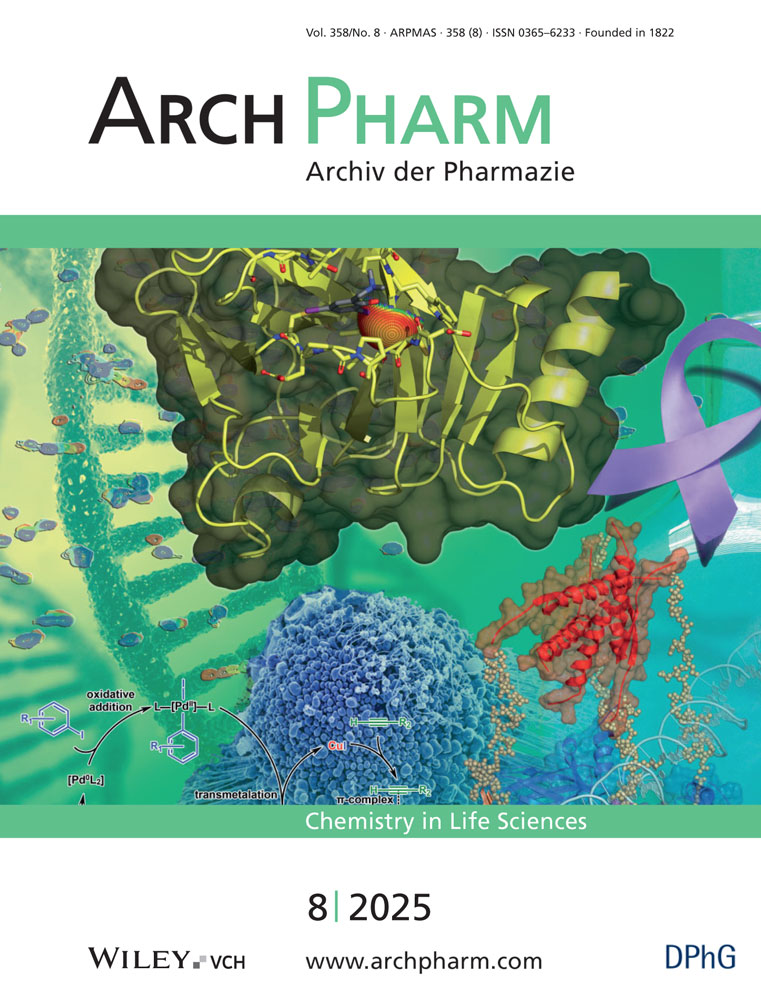Dopamine/Serotonin Receptor Ligands, Part III [1]: Synthesis and Biological Activities of 7, 7′—Alkylene-bis-6, 7, 8, 9, 14, 15-hexahydro-5H-benz[d]indolo[2, 3-g]azecines — Application of the Bivalent Ligand Approach to a Novel Type of Dopamine Receptor Antagonist
Abstract
A series of 7, 7′—alkylene-bridged dimers(7a—e) of the benz [d]indolo[3, 2-f]azecine derivative LE300 was synthesized. Affinity and functional activity at dopamine D1 and D2 receptors were estimated by radioligand binding and a functional Ca2+ assay. All the new bivalent ligands showed significant binding affinities to both D1 and D2 receptorswith an optimal distance between the two monomeric recognition unitsof 6 methylene moieties. The D1/D2-selectivity pattern was dependent on the spacer length. No (7a, b) or only moderate (7c—e) functional activity wasdetected for all bivalent compounds by measuring the inhibition of agonist-induced increase in intracellular Ca2+.




